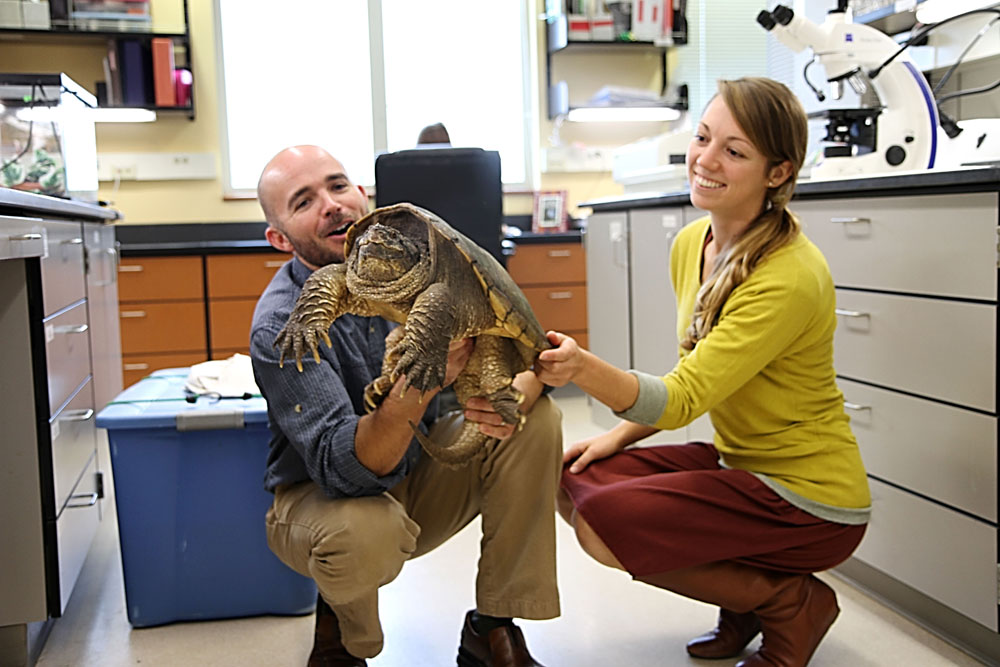Turtles, snakes, and the HokieBird visit Virginia Tech Open House

Snapping turtles have a quick defense against humans. But there’s one danger that these long-lived, old-timers of the reptile kingdom can’t bite away — mercury contamination. As a potent neurotoxicant, consumption of large amounts of mercury is harmful and potentially deadly for humans and wildlife.
Brittney Hopkins of Charlottesville, Va., a graduate student majoring in fisheries and wildlife sciences in the College of Natural Resources and Environment, is investigating how turtles accumulate the contaminant in their bodies, and the associated reproductive effects of the metal in various southeastern turtle species. The Department of Fish and Wildlife Conservation graduate student will bring some of her turtle friends to the University Open House on Saturday, Nov. 12. She’ll be in the Fralin Life Science Institute building atrium to illustrate and talk about her research, and show a large snapping turtle and a nursery of babies belonging to some other species found in Virginia.
The contaminated South River in Central Virginia provides Hopkins with much of the information she needs for her work. Mercury actually is more common than most people realize. It’s a byproduct of volcanic activity, coal combustion, and metal processing among other sources. Hopkins collects turtle blood, nail, muscle, and egg samples in order to develop sustainable methods for monitoring mercury accumulation and to study its effects.
William A. Hopkins leads the research group in which Brittney Hopkins does her research — the Wildlife Ecotoxicology and Physiological Ecology Program. She is not related to William Hopkins, who is an associate professor of fish and wildlife conservation and affiliated faculty member with the Fralin Life Science Institute.
Another of the ecology program team members, J.D. Willson, will bring several of Virginia’s native snakes and amphibians as part of the open house exhibit. Willson of Belmont, Mass., a postdoctoral associate majoring in fisheries and wildlife sciences in the College of Natural Resources and Environment, studies how such things as pollution, climatic variation, and invasive species drive population dynamics in animals that many would consider scary and slithery. Willson and Brittney Hopkins will have their exhibits in the Fralin Life Science Institute atrium from 10 a.m. to 3 p.m. along with students who study amphibians under the direction of Lisa Belden, associate professor of biology and a Fralin affiliated faculty member.
Visitors to the building also can hear continuous 15-minute presentations given by Fralin faculty who specialize in ecology and vector-borne diseases. And a special visitor will be available for photos throughout the day — the HokieBird.
The Fralin Life Science Institute strategically invests in targeted research areas within the life sciences. Such investments include recruitment and set-up support for new faculty members, retention and recognition of established faculty members, seed funds for new research projects, equipment purchases, graduate student recruitment and support, undergraduate research support, and support for outreach activities. Research initiatives within the life sciences receiving the highest priority for support include vector-borne disease, infectious disease and microbial sciences , plant sciences, ecology and organismal biology, obesity, and cancer biology. The Fralin Life Science Institute is also actively engaged in cooperative partnerships with colleges, departments, and other institutes that also support the life science community.




